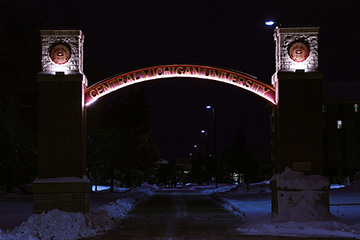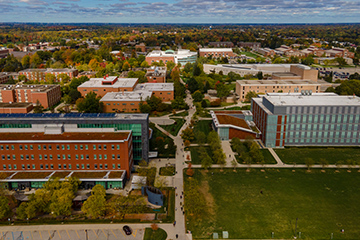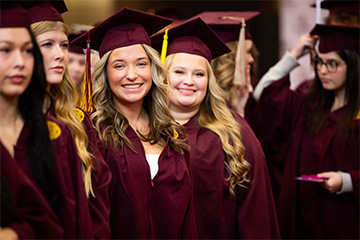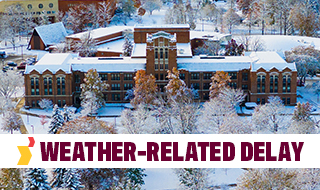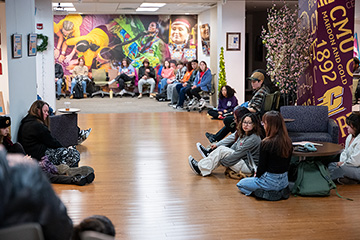Putting a twist on a spooky campus tradition
Honors course to perform stories from Halloween walking tour

Central Michigan University Honors students are going old school to put a new twist on a spooky campus tradition.
Students in the Studies in the Arts course will live-perform five stories on the Legends of the Dark walking tour the day before Halloween. The course is offered as part of CMU’s Honors Program.
Legends of the Dark is a series of 10 ghost stories – with segments to open and close the tour – that take place in various campus locations and are set in different years. They lean heavily on volunteers to create a spooky atmosphere.
Performing the stories live will require shifting from the costumed volunteers to storytelling techniques made for radio, said Katie Mahaffy, a Grayling freshman in the class.
Will Anderson, a faculty member in the School of Communication, Journalism & Media who has a passion for radio drama, is teaching the course.
The class is developing scripts for performers to use, Mahaffy said. They’ll also make use of sound effects, music and spooky-inspired narrative techniques.
Collaboration a key to success
The course has brought together students from a variety of majors for a creative endeavor that highlights the individual strengths of each student. Some of the more artistic students have offered creative ideas, while students in STEM majors offer technical insights.
“It creates a lot of discussion about how to make this work,” Mahaffy said.
Students are working in five groups, mostly of four to five students each. Each group is responsible for one Legends of the Dark story.
Not all the 10 stories are suitable for radio dramas, Mahaffy said. One of their first tasks was identifying which stories could translate easily from the tour to the stage, and which stories relied on a narrator reading a script.
Students worked together to identify the stories that offered opportunities for dialogue and sound effects.
It allowed students to take an inventive eye into how they crafted their stories, including using flashbacks to take the audience from the modern day back to the purported time the stories took place.
By the time of the performance, the course will have invested six weeks in the project, Mahaffy said. They still have to iron out the script, who is playing what roles and nailing down those side effects. The most important work was mental preparation.
“You have to be willing to immerse yourself in the story,” she said.
The performance is set for 1 p.m. on Oct. 30 in Park Library’s Sarah and David Opperman Auditorium, a few hours before the actual walking tour.
The Clarke is providing additional support by helping promote the event and store files related to the performance, Anderson said.
